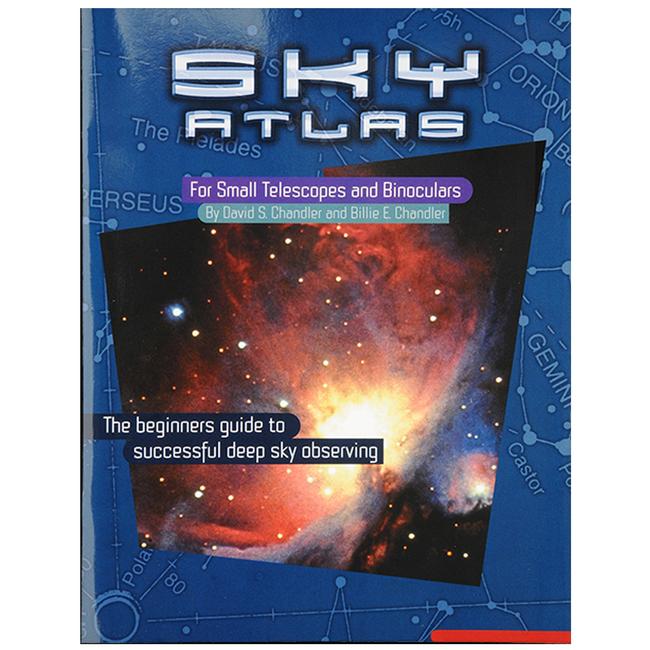
|
Sky Atlas For Small Telescopes And BinocularsThe atlas format is similar to the classic Nortons Star Atlas. Think of an orange as the whole sphere of the sky. Slice off the two ends, then cut the remainder of the orange into six vertical slices. The first circular map covers the north polar region, six vertical segments spaced around the equator cover the majority of the sky, and the final circular map covers the south polar region. The circular maps are stereographic projections and the vertical segment maps are transverse Mercator projections. Both projections preserve shapes well. The maps highlight the Milky Way with representation digitized from a master Milky Way map by the renowned space artist, Don Davis. You will find this to be a great improvement over Milky Way outlines in most other atlases. Deep sky objects, including a careful selection of double stars and other stars of special interest, are highlighted in blue. Constellation figures are drawn to match the figures on The Night Sky. Facing each map the highlighted deep sky objects are grouped by constellation with catalog information and helpful commentary. Where more detail would be helpful, a small finder chart is included as an inset map. To be selected, an object must be visible in a typical 2.5 telescope, an ordinary pair of binoculars, or both. If you have a larger telescope this is still an excellent starter atlas. Even experienced observers will find it useful as a guide to selecting bright objects for public star parties. Some of the binocular objects are rarely marked on other atlases because they are too large for typical telescope fields of view. If you have another star atlas we challenge you to find a reference to Cr 70, the large but striking open cluster surrounding the three belt stars of Orion, Mel 20, the huge naked eye cluster surrounding the brightest star in Perseus, Stock 2 or Mel 15 near the double cluster in Perseus, or Mel 111, the Coma Berenices cluster. These are all excellent binoculars objects that should not be overlooked, but typically are! Preceeding the atlas proper is a general overview of observing techniques, equipment, a little background on the nature of the deep sky objects to be observed, and suggestions on where to go next. The last page of the atlas is a list of resources including books, other charts, software, and periodicals. Quoting from the text, If this atlas does the job it is intended to do, you will soon outgrow it.It is intended to ensure that your first steps in astronomical observing will be successful and rewarding ones.
|
| Merchant | Price | Regular Price | |
|---|---|---|---|
| Summit Hut | $13.50 | $13.50 |
Copy the following string into an e-mail to support@ultrarob.com to request support.
Mozilla/5.0 AppleWebKit/537.36 (KHTML, like Gecko; compatible; ClaudeBot/1.0; +claudebot@anthropic.com)


 Blog Feed
Blog Feed Follow on Twitter
Follow on Twitter Become a Facebook Fan
Become a Facebook Fan Flickr
Flickr MySpace
MySpace

